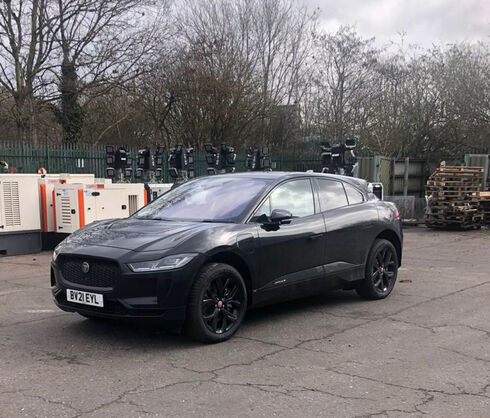
Electric journey
12 March 2021

The Government has said that sales of new petrol and diesel cars and vans will be phased out by 2030, causing all drivers to think about the alternatives.
Pete Beach, sales and marketing manager of welfare accommodation manufacturer Genquip Groundhog, has swapped his diesel car for an electric Jaguar iPace, which has a maximum range of up to 292 miles according to the car maker’s website.
“I normally travel between 35,000 to 40,000 miles a year visiting customers throughout the country and I drive regularly between my home in Sheffield and the Groundhog headquarters in Neath, which is 200 miles away,” he tells me.
“I picked up the car yesterday at Groundhog where it was delivered, and charged it to 100% using a charge point that’s been fitted there. I was keen to see how far I could drive without stopping.
“After charging, the readout immediately showed a range of 246 miles, but then dropped to 185 miles before I’d even set off. However, I stopped briefly at Monmouth Services after about 50 miles and the display said I would arrive home with around 40 miles to spare.
“The range kept reducing on the way and I eventually switched off the air conditioning and heating. But I had the cruise control set at 70mph for most of the trip and I got home with two miles to spare.
“On occasions I drive more than 500 miles a day with few stops before reaching home or a hotel, only to start answering emails late in the evening. Having to stop to charge the car will mean I can catch up on messages and get other work done en route.
“Going electric is hopefully an opportunity to work differently and more efficiently. The lower tax coding for having this sort of car obviously helps, too, and being a green manufacturer it’s an appropriate step for Genquip Groundhog.
“In future, I will stop and use quick chargers at service stations. Some can give an 80% charge in 40 minutes, and places like Tesco and Costa are installing charging points. The car Sat Nav shows the nearest locations.”
While the car is parked on his driveway, Pete will connect it to a 16kW ‘pod’ charging point installed at the side of his house.
“You could recharge from the normal domestic electricity supply and run a cable out through a window, but that would take 36 hours to charge from flat. On the first charge at home it took 14 hours. An app on my phone said that it cost £10.97 – much cheaper than the equivalent of diesel to do the same mileage.”
Pete is looking at different electricity tariff options to see if the car can be charged at a cheaper off-peak rate. And while his mileage has obviously been reduced during the pandemic, he’s looking forward to restrictions being eased and getting back to something like normality.
Travelling between various locations in future should give more of an insight into the pros and cons of going electric. I’ll be checking back with Pete now and again to see how he’s getting on and I’ll keep you updated on this journey.
Meanwhile, what are your experiences or views of electric cars for business? Let me know.

